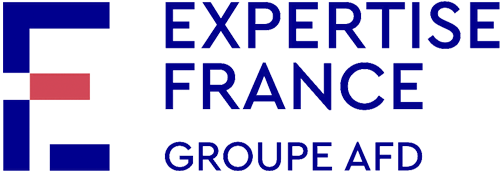Project 95 of the EU CBRN Centres of Excellence (SAFETIC AAF)
Objective
-
€3.5mBUDGET
-
15/06/2022PROJECT START
-
36 monthsDURATION
A need to build on the previous initiatives for industrial risk management
In the African Atlantic Façade region, the partner countries have made significant progress in the management of risks related to hazardous facilities and transportation involving chemical products following the projects P69 INSTASUR (facilities classified as high-risk) and P71 SECTRANS (transportation of dangerous goods).
The CBRN Risk Mitigation Centres of Excellence Initiative of the European Union (EU) has developed the P95 SAFETIC project to address needs and requirements for broadening the results of these projects. The objective is to finalise the implementation of tools to improve the assessment of industrial risks and take prevention, protection and intervention measures.
P95 SAFETIC: activities focused on high-risk facilities and the transportation of dangerous goods
The project takes a collaborative approach with four work packages, focused on high-risk facilities and the transportation of dangerous goods. It integrates local and international practices, thereby providing customised solutions for each country:
• Formalisation of the legal framework: revision of strong legal frameworks to ensure effective regulations, with the updating of inventories and reference documents
• Optimisation of emergency plans: strengthening security through the preparation of detailed plans and the organisation of crisis management exercises to test and adjust the emergency plans in real-life settings
• Strengthening of competences: improving operational expertise through regional and national training, including sessions outside capital cities and extended training through e-learning
• Promotion of sustainable regional cooperation: strengthening regional synergies and the network of experts, including through study tours to exchange knowledge and disseminate best practices
Among the activities, the project aims to enable the preparation of hazard studies and operating plans (internal and external), improvements in the operational emergency response, the continuation of national training, the introduction of the ADAM (Accident Damage Analysis Module) tool of the Joint Research Centre (JRC), and the continuation of the team of regional experts.
Expected outcomes
The SAFETIC project is ambitious and of great interest for the partner countries. It capitalises on the previous projects financed by the EU under the CBRN Centres of Excellence (CoE) Initiative, which are all implemented by Expertise France.
At the project completion, the partner countries will have all the necessary means to improve the legal framework and prepare security documents on high-risk facilities involving chemical products, and on the transportation of dangerous goods.
The local experts will have benefited from a reinforcement of their expertise and their ability to produce security documents, intervene in the event of industrial and transport accidents, and provide a framework for sustainable regional cooperation.
More generally, regional cooperation will be strengthened.
Key figures
The SAFETIC project will enable the following activities.
In terms of high-risk facilities (HRF):
• 30 hazard studies (3 for each partner country)
• 30 internal emergency plans (3 for each partner country)
• 30 external emergency plans (3 for each partner country)
• 10 field exercises to test the emergency plans (1 for each partner country)
• 50 national training programmes (5 for each partner country)
• 1 inspection guide
In terms of the transportation of dangerous goods (TDG):
• 30 emergency plans (3 for each partner country)
• 50 national training programmes (5 for each partner country)
Example of a regional activity
Regional HRF-TDG Seminar in Abidjan, October 2024
National experts and the focal points of the ten partner countries gathered at this regional seminar to provide a detailed progress report on the work carried out on the hazard studies and emergency plans. It also provided a valuable opportunity to exchange experiences and good practices at regional level. During this seminar, meetings were held with key experts to discuss the main aspects of the hazard studies and emergency plans. These meetings were an opportunity to discuss the difficulties encountered and answer the relevant questions. The objective was to facilitate the completion of the work organised through the project.
The event included a visit to an industrial site and a field exercise, followed by discussion sessions, questions and specific guidelines on ensuring the proper implementation of the exercises planned in each country. This practical approach will further strengthen regional cooperation and provide a unique opportunity to share the lessons learned.



